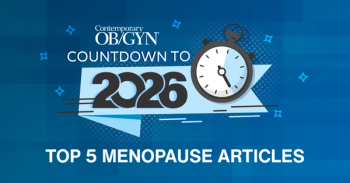
Low Levels of Vitamin D, Trace Elements Linked to Premature Ovarian Failure
Vitamin D deficiencies are common in women with primary ovarian insufficiency (POI), and serum levels of zinc, copper, and vitamin D appear to correlate with hormonal status, concluded a recent cross-sectional, case-control study.
Vitamin D deficiencies are common in women with primary ovarian insufficiency (POI), and serum levels of zinc, copper, and vitamin D appear to correlate with hormonal status, concluded a recent cross-sectional, case-control study involving 63 participants.1
Characterized by amenorrhea, hypoestrogenism, and elevated levels of serum gonadotropin in women younger than 40 years, POI-also called premature ovarian failure (POF)-occurs in 1% of women.2 Approximately 10% to 28% of women with primary amenorrhea and 4% to 18% of women with secondary amenorrhea have POI/POF. Although, POI/POF sometimes is also referred to as early menopause or premature menopause, this is a misnomer, because women with POI/POF, unlike menopausal women, generally retain intermittent ovarian function for many years and can become pregnant.
It has been previously established that the risk of POI increases when autoimmune conditions are present. For the immune system to function efficiently, there must be an adequate intake of vitamin D and trace elements, such as copper and zinc, explained the study authors.1 To evaluate whether serum levels of vitamin D, copper, and zinc were in any way associated with POI, researchers compared the serum concentrations of zinc, copper, and vitamin D for women with POI who had given birth to at least 1 child (study group, n=35) and women with normal menstrual cycles (control group, n=28).
After determining the serum concentrations of copper, zinc, and vitamin D for each participant, the researchers found that women with POI had significantly higher serum copper levels and copper:zinc ratios than women with normal menstrual cycles. Women with POI also had significantly lower serum vitamin D and zinc levels than women in the control group. In addition, the study authors reported that serum follicle-stimulating hormone (FSH) levels were inversely correlated with zinc and vitamin D levels and positively correlated with copper:zinc ratios and copper levels. Vitamin D levels were inversely correlated with FSH levels, copper:zinc ratios, and copper levels and positively correlated with zinc levels.
These correlations between hormonal status and zinc, copper, and vitamin D indicate that there may be a relationship between POI and vitamin D and trace elements. Although these findings have no bearing in current clinical practice, they may direct hypotheses for future studies investigating the mechanisms behind alterations in trace elements and vitamin D deficiency in women with POI and whether these changes could be used to screen for the risk of the development of POI, concluded the study authors.
Pertinent Points:
- Most women with primary ovarian insufficiency have a vitamin D deficiency.
- There is significant correlation between serum levels of zinc, copper, and vitamin D and hormonal status.
References:
1. Kebapcilar AG, Kulaksizoglu M, Kebapcilar L, et al. Is there a link between premature ovarian failure and serum concentrations of vitamin D, zinc, and copper? Menopause. 2013;20:94-99.
2. Popat V, Lucidi RS. Ovarian insufficiency. Available at: http://emedicine.medscape.com/article/271046-overview#showall. Accessed March 3, 2013.
Newsletter
Get the latest clinical updates, case studies, and expert commentary in obstetric and gynecologic care. Sign up now to stay informed.











